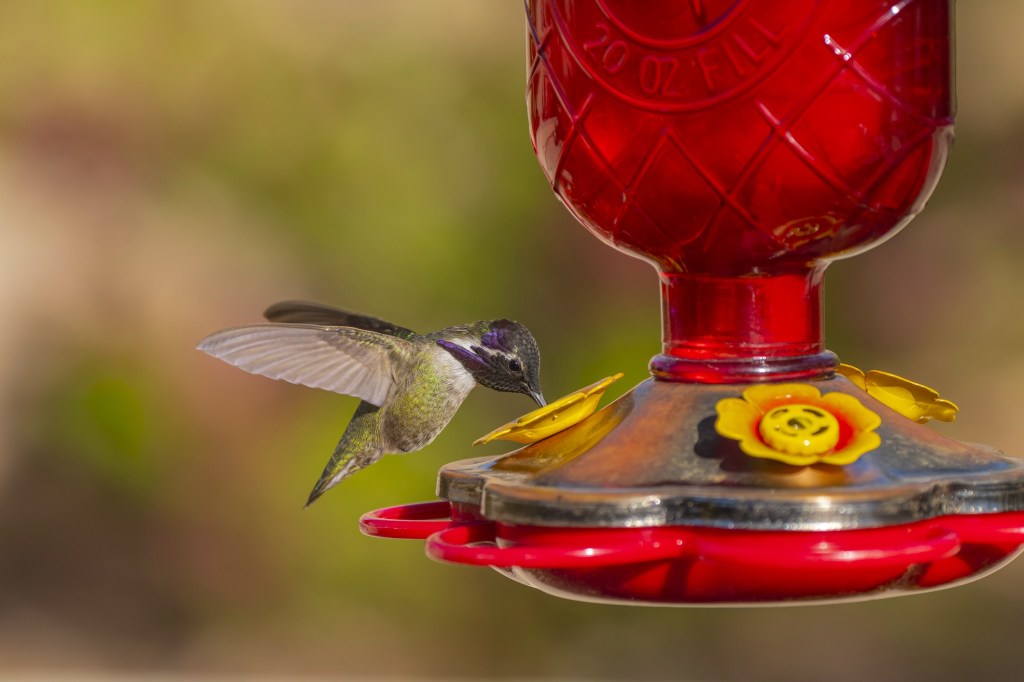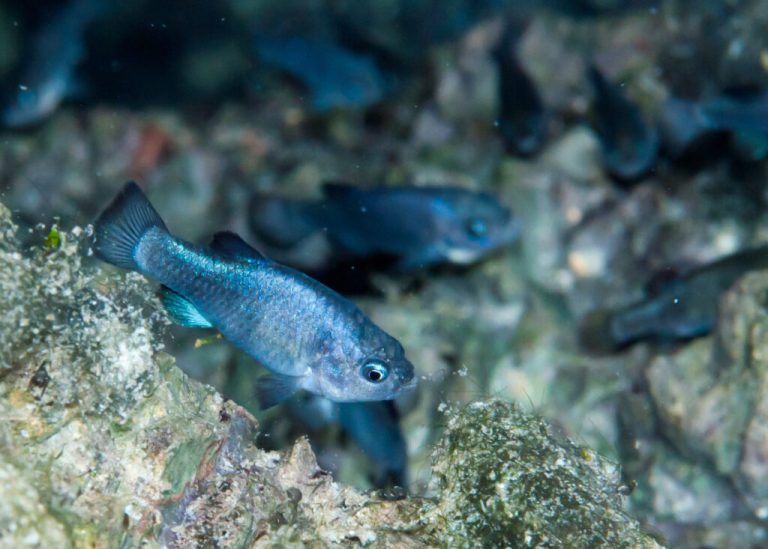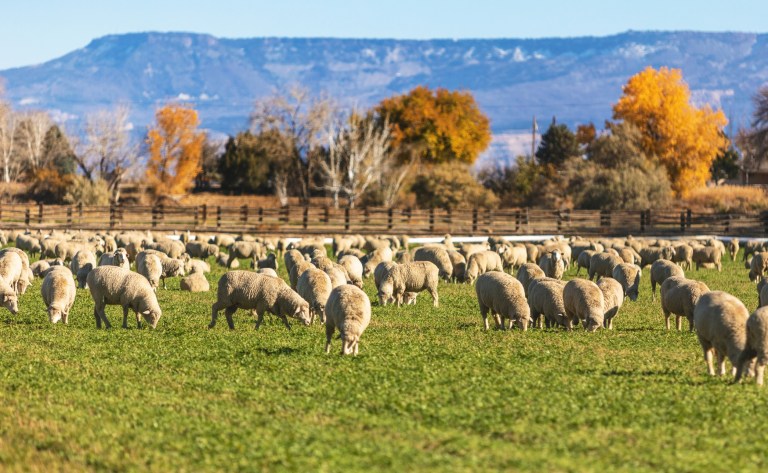When the weather turns frigid, there’s no greater joy than traveling to a warmer climate to soak up some vitamin D. Hummingbirds feel this way too — but they’re not just looking for a little sun on their backs. Because their search for food is limited by decreasing daylight hours in late summer and early fall, most North American species of these birds soar southward, only returning in late winter and early spring.
While many birds migrate, it’s a uniquely impressive feat for the hummingbird. The ruby-throated species, for instance, weighs less than a quarter of an ounce, but according to the U.S. Fish & Wildlife Service, it can fly nonstop for up to 20 hours when completing a 500-mile trip across the Gulf of Mexico.

And that’s just fluttering at the surface of things: There are 365 species of hummingbirds in the Americas alone, each with their own migration preferences. So if you’re eager for a glimpse of these tiny travelers in your own backyard, join us as we take a closer look at their seasonal patterns — and serve up a recipe for nourishing nectar you can make at home.
Speeding South (or Staying Put)
According to Hummingbird Central, the birds’ hearts beat up to 1,260 times a minute during these migration journeys, and their wings flap up to 80 times a second. To prepare for the intense flights, they generally gain between 25% and 40% of their body weight by consuming nectar, sugar water, insects, and spiders during a feeding frenzy called hyperphagia.
“Handling these birds is amazing. There’s so much fat all over, they feel squishy in the hand,” hummingbird bander Lanny Chambers told Journey North. “When they perch, rolls of flab bulge from their necks as they move their heads, and the fat store on the back looks like a dowager’s hump.”
Hummingbirds also tend to land in the same spots with remarkable accuracy. A large part of their brains is taken up by the hippocampus, the section responsible for spatial memory — and it shows. Not only are they able to remember specific flowers they’ve visited, but they often return to the same destinations, sometimes even on the same day, every year. And fascinatingly, youngsters typically know the same routes as their elders, even if they’ve never flown them before.
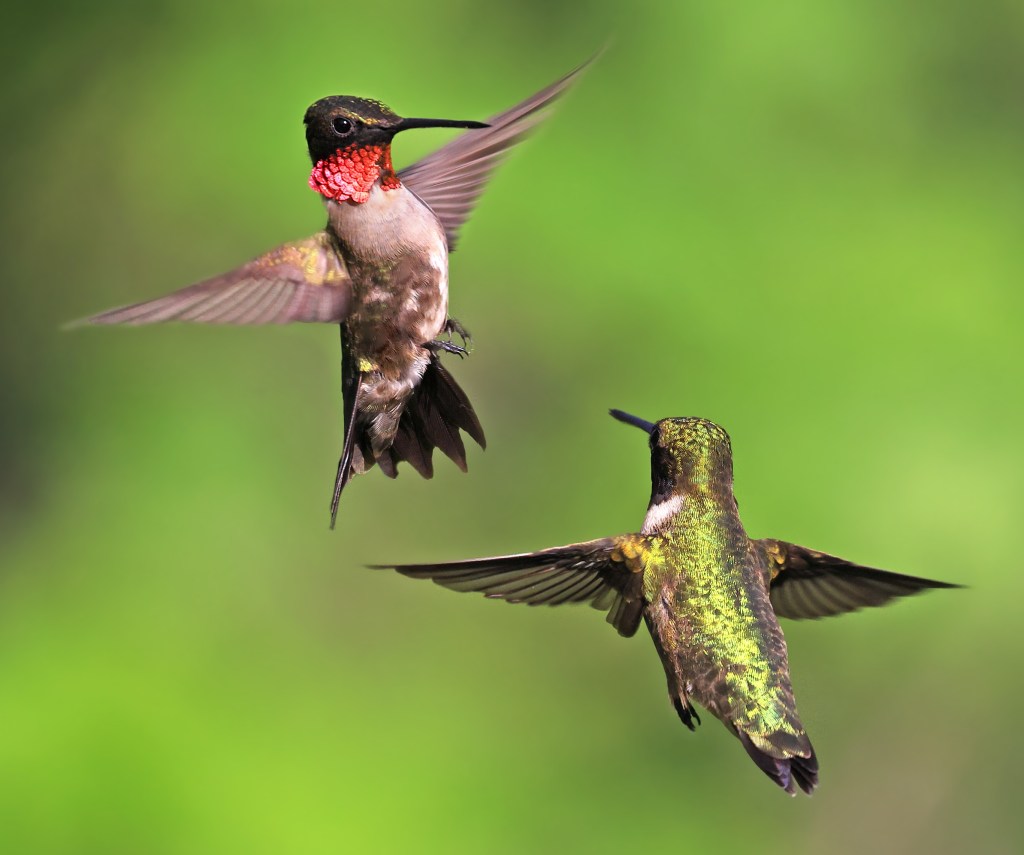
As mentioned earlier, the hundreds of hummingbird species in the Western Hemisphere all have slightly different migration patterns, and some take longer routes than others. Long-distance migrators can spend up to three weeks traveling hundreds or even thousands of miles south.
The ruby-throated species starts flying southward, primarily from the eastern U.S., in August and September. Some of these birds stay put in southern states like Florida, Louisiana, and Texas, while others only make pit stops there before soaring over the Gulf of Mexico or down the Gulf Coast, settling in for the season as far south as Costa Rica. Then from February to May, they make the long journey back to the central and eastern U.S., with males typically arriving first.
But other migratory species aren’t so keen on making long-haul flights. Black-chinned hummingbirds typically take advantage of sunnier spots like California, Arizona, and western Mexico during the colder months before returning north to mountainous states like Nevada and Colorado in the spring. And Allen’s hummingbirds, which spend the warmer seasons in Southern California, also pop over to Mexico for the winter — though they may come back as early as January.
There’s one type, however, that doesn’t seem to mind a little chill in the air. Anna’s hummingbirds are “weird,” ornithologist Sheri Williamson told Audubon magazine. “They break a lot of rules that we have established in our minds.”
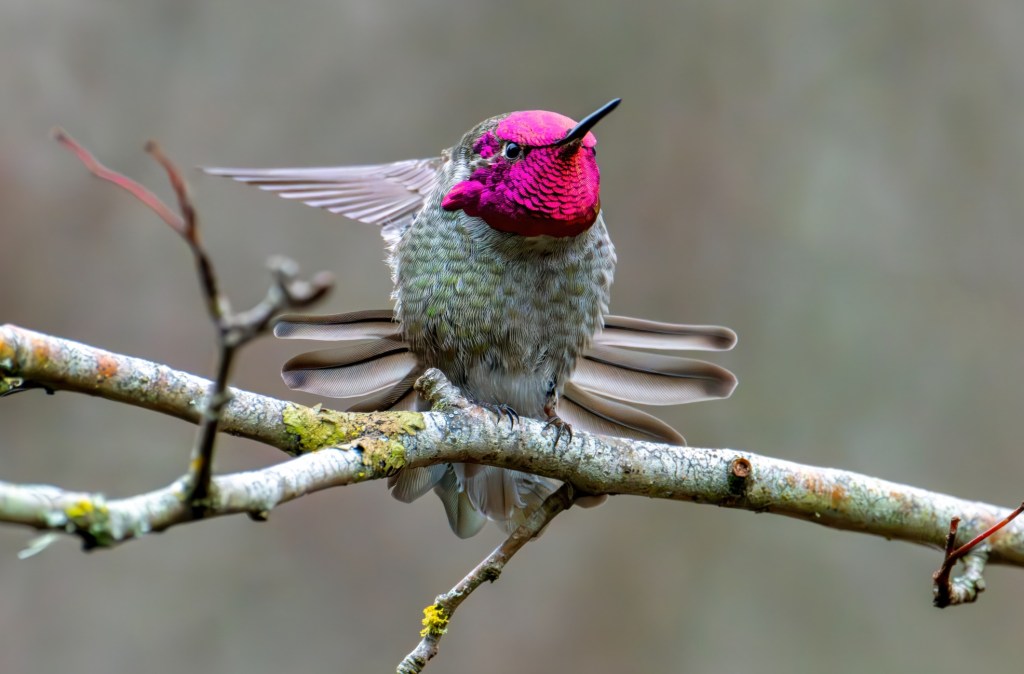
Because they inhabited only Southern California and Mexico during the early 20th century, they’ve now evolved to breed during mild winters. For the most part, they live on the West Coast year-round — and some even thrive in Alaska and western Canada.
“They’re managing to survive and prosper up there, at least in a limited fashion, in an area where we wouldn’t have imagined any hummingbird could survive,” Williamson noted.
How to Make Nectar
Offering hummingbirds sustenance isn’t just an exciting opportunity to glimpse at them through your kitchen window — it’s also a chance to provide nourishment that may help them endure their seasonal sojourns. “It’s awfully hard for the average person to do anything to help a bald eagle or peregrine falcon,” Williamson said. “But you can make a difference in the lives of hummingbirds.”
Here’s a simple recipe for homemade nectar:
Ingredients:
- Boiling water
- White sugar
Directions:
- Whisk one part sugar with four parts boiling water until the sugar dissolves.
- Wait until the mixture cools, then fill your clean hummingbird feeder.
- Any extra can be stored in an airtight container in the fridge for up to a week.
Keep in mind that you’ll want to use refined white sugar here — not brown or raw sugar or other sweeteners like honey and agave, which may be difficult to digest and can lead to harmful microbial growth. And stay away from adding red food coloring, since it may also be detrimental to their health.
If you’re worried your nectar supply will prevent these pocket-sized pilots from initiating their natural migrations, Emma Grieg, a project leader at the Cornell Lab of Ornithology, told Country Living that it shouldn’t be a concern. “The shortening days in northern latitudes cue them to make a move before all the food disappears,” she said, adding, “Your feeders will not keep them from migrating.”
In fact, if you live in the southern U.S., you may want to maintain your feeder supply year-round to keep the hummingbirds coming (and humming). But regardless of whether they’re around to enjoy your sweet bird bounty for a few weeks or all year long, head to the Smithsonian’s National Zoo & Conservation Biology Institute for more tips on cooking up the perfect nectar — and then take this quiz from the U.S. Fish & Wildlife Service to test your knowledge of how to help the birds.
